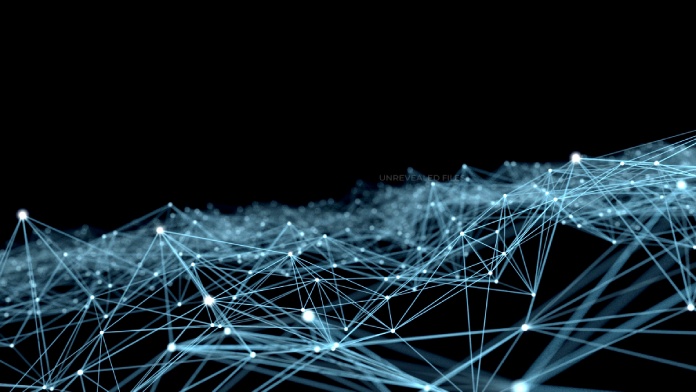In today’s world, secure communication is essential for businesses, governments, and individuals. Cryptography has been used for centuries to secure communication. However, with the rise of quantum computing, traditional cryptography methods may no longer be sufficient. Quantum key distribution (QKD) is a secure communication technique that uses the principles of quantum mechanics to ensure that the keys used for encryption are secure. In this article, we will explore the basics of QKD, how it works, and its applications.
Contents
What is Quantum Key Distribution (QKD)?
Quantum key distribution is a secure communication protocol that uses the principles of quantum mechanics to generate and distribute keys for encryption. The basic idea behind QKD is that two parties (Alice and Bob) can use a quantum channel to exchange keys that are impossible to intercept or eavesdrop on without being detected.
The quantum channel used in QKD can be any physical medium that allows the transmission of quantum states. The most common medium used is optical fiber, but QKD can also be implemented using free-space optical links, satellite links, and other physical channels that support quantum communication.
How does QKD work?
The QKD protocol involves several steps, including key generation, key distribution, and key verification.
Key Generation
The first step in QKD is the generation of a shared secret key between Alice and Bob. This key is used to encrypt and decrypt messages sent between them. In QKD, the key is generated by encoding quantum states onto photons (particles of light) using a device called a quantum random number generator. The random number generator creates a stream of photons, each of which is in a superposition of two possible states (0 and 1). The stream of photons is then sent through a polarizing filter that randomly selects either the 0 or 1 state. Alice and Bob each receive a portion of the photons and measure the polarization of each photon using a polarizing filter. The random polarization measurements of the photons create a shared secret key.
Key Distribution
Once the key is generated, it needs to be distributed to both parties. In QKD, this is done using the same quantum channel used for key generation. The key is encoded onto photons and transmitted over the quantum channel to the receiver. Any attempt to intercept or measure the photons will change their state, and the receiver will detect the interference. This means that any eavesdropping attempts will be detected, and the key will be discarded.
Key Verification
After the key has been distributed, Alice and Bob need to verify that the key is secure and has not been intercepted. This is done using a process called information reconciliation and privacy amplification. During this process, Alice and Bob compare a subset of the key they received to detect any discrepancies. If discrepancies are detected, they discard the key and start again. If there are no discrepancies, they use a privacy amplification algorithm to further refine the key and remove any potential eavesdropping information.
Applications of QKD
Quantum key distribution has several applications in secure communication. Some of the most important ones are:
- Military Communication: QKD is used by the military to secure communication between their forces. This is especially important in situations where communication can be intercepted or jammed.
- Financial Services: QKD is used by financial institutions to secure financial transactions and prevent data theft. This is essential in the modern era, where most financial transactions are conducted online.
- Medical Communication: QKD can be used in medical communication to secure the transmission of sensitive patient data, such as medical records and test results.
- Government Communication: QKD can be used by government agencies to secure their communication and prevent eavesdropping.
Conclusion
Quantum key distribution is a secure communication protocol that uses the principles of quantum mechanics to generate and distribute keys for encryption. It offers several advantages over traditional cryptography methods, including provable security and the ability to detect eavesdropping attempts. Although QKD is still in its early stages of development, it has the potential to revolutionize secure communication in various fields, including military, finance, healthcare, and government. As quantum computing advances, QKD will become even more crucial for securing communication in a quantum world. With the increasing need for secure communication, QKD is an essential technology that will play a significant role in the future of information security.
Sources
- Scarani, V., Bechmann-Pasquinucci, H., Cerf, N. J., Dušek, M., Lütkenhaus, N., & Peev, M. (2009). The security of practical quantum key distribution. Reviews of Modern Physics, 81(3), 1301-1350.
- Lo, H. K., & Preskill, J. (2012). Security of quantum key distribution using weak coherent states with non-random phases. Quantum Information & Computation, 12(9-10), 901-946.
- Gisin, N., Ribordy, G., Tittel, W., & Zbinden, H. (2002). Quantum cryptography. Reviews of Modern Physics, 74(1), 145-195.
- Wang, X. B. (2019). Quantum key distribution. Nature Photonics, 13(11), 781-792.
- Diamanti, E., Lo, H. K., & Qi, B. (2016). Practical challenges in quantum key distribution. npj Quantum Information, 2(1), 16025.
- National Institute of Standards and Technology. (2017). Post-Quantum Cryptography. Retrieved from https://www.nist.gov/programs-projects/post-quantum-cryptography.
FACT CHECK: We strive for accuracy and fairness. But if you see something that doesn’t look right, please Contact us.
DISCLOSURE: This Article may contain affiliate links and Sponsored ads, to know more please read our Privacy Policy.
Stay Updated: Follow our WhatsApp Channel and Telegram Channel.












